Classroom Management Theorists and
Theories/Jacob Kounin
Overview/History of Jacob Kounin's Work
Jacob
Kounin is an educational theorist who focused on a teacher’s ability to affect
student behavior through instructional management. His best-known work was done
in the 1970s, where he conducted two major case studies. From educational
psychologist to a well-known theorist today, Kounin brought a novel idea that
incorporated both the instructional and disciplinary aspects of the classroom
together. Before this happened, most educators viewed their role as a
straight-forward passing on of skills and knowledge to their students. After
publishing his book, “Discipline and Group Management in Classrooms”(1977),
Kounin attempted to influence the original viewpoint of educators and to
integrate teaching and discipline in the classroom.
Kounin’s
first observation of an intriguing pattern in student behavior was when he
asked a student in his own classroom to put something away; he noticed that the
students around him suddenly followed in focusing their attention. He watched
as the correction of one student behavior actually spread to other students
engaging in inappropriate behaviors, and resulted in a much more ordered room.
He later described this phenomenon as the “Ripple Effect”.
This first
observation led Kounin to conduct experiments over 5 years with students from
all levels, but later Kounin changed his focus to seeing how teachers actually
prepared or proactively managed their classrooms before behavior occurred. He
noticed how the reactions of teachers to students affected classroom management
in a negative way. He learned that teachers were always receiving similar
responses from their students no matter how they reacted to misbehavior in the
classroom. From this observation, he concluded that there must be something a
teacher could do to prevent misbehavior in the first place, which would lead to
more effective classroom management.
From his
studies, Kounin developed theories about classroom management that were based
around a teacher’s ability to organize and plan in their classrooms while using
proactive behavior and high student involvement. He believed that in order for
a teacher to have an effective connection between management and teaching,
there needed to be good Lesson Movement. This Lesson Movement is achieved
through withitness, overlapping, momentum, smoothness, and group focus.
Withitness
was Kounin’s word to describe a teacher’s ability to know what was going on at
all times in his/her classroom. This can be as simple as making scanning looks
around the room every once in awhile. Kounin said that is was not necessary for
the teacher to know what is going on, but for the students to perceive that the
teacher knows.
Overlapping
is the ability for a teacher to in a word, multi-task. Being able to present a
new topic while preventing misbehaviors is essential for a teacher. The concept
of overlapping ties into the idea of withitness as well.
Momentum
is the flow of a lesson. A teacher must be able to “roll-with-the-punches” in
acknowledging that things might go wrong and being able to fluidly adapt and
continue onward despite distractions and disruptions. An example of this would
be a student late for the class interrupts or technology that is being used
goes wrong.
Smoothness
is also highly related to momentum. Being able to keep on track without getting
on tangents as well as being diverted by irrelevant questions or information is
important. Many times, a teacher can get distracted and leave a topic open and
not come back to it until later, which can be confusing to students. Another
thing that can ruin smoothness is when a teacher does not have a plan or course
of action, it can seem as though the lecture is jumping from one topic to the
next.
The final
aspect that results in Lesson Movement and effective teaching through
integrating management and learning is group focus. Group focus is the ability
of a teacher to engage the whole class using techniques such as building
suspense or asking community questions. This can also look like asking random
questions, or asking a student a question and then looking around at other
students to see if they are thinking or ready to respond. These are the main
theories and history of Jacob Kounin.
Ramona B==
Implementation Of Kounin's Philosophy == As mentioned above the Five Main
points of Kounin's work are:
1) withitness
2) overlapping
3) momentum
4) smoothness
5) group focus
I.
"With-it-ness"
The
teacher is responsible for inhibiting poor behavior. The teacher can maintain
this strategy by making eye contact to all students at all times. The teacher
should know each student on a personal basis (i.e. name, interests, strength,
weaknesses, etc.)The teacher can use other non-verbal techniques to show
students that they are alert and care about the well-being of all students. The
teacher may also want to make a respectable suggestion to inform the student
that their behavior is unacceptable. The teacher should have communicated to
all students the expectations and can have these displayed so everyone can be
"with-it".
II.
Overlapping
The
teacher can have procedures that will allow the teacher to be effective when
two situations occur at the same time. For example, if a student is done with
an assessment or an assignment early have something for them to do such as
moving on to another assignment, reading a book, or a quiet enrichment
exercise. While the early-finishers are staying busy the teacher is allowed to
move around the room to answer question or assist struggling students. Another
example, if the teacher is in the middle of a lecture and a student enters the
room the teacher should make eye contact with the student, have an area for the
student to turn in work, and continue with the lesson. Once the students are
doing their work the teacher can go to the tardy student and tell them what
they missed or answer any questions from the homework assigned the night
before.
III.
Momentum
The
teacher should make lectures short to allow students to group together and move
around to gain more knowledge of the content. The teacher should make sure that
these exercises remain short so students do not get bored. A teacher can keep a
timer and assign roles to students to keep the students moving and on a time
deadline. If students are struggling the teacher can reflect on what they can
do to make the lesson more meaningful and easier to understand for their
students.
IV.
Smoothness
The
teacher can have students make hand gestures that will tell the teacher whether
the student has a comment or question concerning the lesson. This technique
allows the teacher to have an idea of which students may cause an unwanted
tangent and which students may have a good question that could pertain to
utilizing the time effectively. When placing students in group-work the teacher
can walk around facilitating and listening to discussions of other students.
The teacher can then intervene or take the group to a different track if the
teacher feels it is necessary.
V. Group
Focus
The
teacher can implement this strategy with several techniques:
A.Encourage
Accountability: Make students aware that they will be graded for their
participation and contributions to the group.
B.The
teacher can have a canister of popsicle sticks that have each students name on
them. The teacher can pick the popsicle stick at random to keep students on
track and out of their seats with anticipation for question/answer time, board
problems, etc.
C.The
students can facilitate a discussion. Once they have finished a task they can
turn to each other or they could pair up with those who are already done and
compare answers.
In order
for implementation to be effective the teacher must be well organized,
communicate their expectations to their students, and hold them responsible for
their actions to encourage motivation and attention.
Elementary School
In an
elementary setting, the teacher could pair up the class in groups of 3-5
students and assign a team name. The teacher could have a visual of a pocket
chart to show where that group will be during the time granted. For example, a
pink card for Suzy, Bobbie, and Billy could stand for the Phonics station. A
green card could stand for Lizzy, Gary, and Greg to be at the Math station. The
time could be set for 30 minutes. Once the timer has elapsed the students would
be instructed of how to rotate. The teacher must not remain idle at any time.
This should be used as reinforcement/enrichment of the content in which the
teacher has already covered the material and could informally assess
understanding and application of content. The centers assure the five
strategies by having directions at each center, a visual to state where
students should be after the time is up, and a way for teachers to actively
listen to concerns/speed-bumps that are holding them back. The teacher should
make each center as kinestethic as possible with many manipulatives at each
station (i.e. Magnetic letters for spelling center, dice or play money for
Math, etc.) It is very important that elementary instructors maintain their
energy and enthusiasm when presenting to their students.
Middle School
Kounin's
theories are very useful in a Middle School setting. The first two terms he
uses, "Withitness" and "Overlapping," can be used for
preventing the misbehavior of other students. When one student is about to
throw a paper airplane or punch his friend in the shoulder, the teacher can
make eye contact with him and shake his head. The belief is that doing this
will show other students that they will not get away with this either. In
Middle School, however, it usually becomes more necessary to make an example of
a student who willingly breaks a rule so that other students know they will
share the same fate if they do so as well. Also, the "overlapping"
ability to do more than one thing at once is essential, since most middle
school students will capitalize on the opportunity to get away with outlawed
behavior while the teacher's back is turned. A final approach that seemed very
effective was implementing lesson plans with high participation formats. When
every student always has something to do, each will not become bored and find
off-task behavior to engage in.
High School
In a high
school setting, a teacher needs to incorporate all of the aspects of Kounin's
philosophy in their teaching practice. This means that with-it-ness, overlapping,
smoothness, momentum, and group focus all must meld together to form a coherent
whole. This could be implemented through teachers having at least a week’s
lessons ahead of time in order for them to be sure that lesson fluidity occurs.
The with-it-ness that comes with being an effective teacher is most often the
fruit of planning and keeps students on task. This takes a special ability to
diffuse potentially distracting situations in which teachers need to bring
students back to the task at hand. In showing students the connections between
one subject to the next, using previous vocabulary to prepare students for
learning new vocabulary, a teacher will show overlapping. This overlapping ties
into the momentum aspect. Students that feel as thought they are learning will
make connections between old and new material. This confidence will allow them
to contribute to the momentum of the classroom. The group focus aspect in the
high school setting really takes a quick attention to detail. Keeping high school
students on task and not thinking about tomorrow night’s football game is a
skill that is essential to promoting learning. A teacher needs to be able to
spot check for students not paying attention and rapidly engage them back into
the subject, while holding the rest of the class’ attention. This can be done
through exciting announcements, demonstrations, or by changing the atmosphere
of learning.
Critique of Kounin's Philosophy
Jacob
Kounin found his original inspiration from the research of a psychiatrist named
William Glasser who developed his well-known “Reality Therapy” in the
mid-1960s. Trained initially in the Sigmund Freud approach, Glasser rejected
the concept of delving into a person’s past and subconscious thought-processes
in favor of a behavior-centered counseling method that encourages the person to
focus on the “here-and-now” of the situation and what can concretely and most
productively be done about a person’s immediate environment. Ultimately,
individuals should see that they are part of social structure and must live
with other human beings. Rather than searching for past hurts, Glasser tried to
help his clients recognize the failings in their behaviors and make appropriate
corrections. People have needs and must learn how to pursue those needs without
encroaching upon the well-being of others. Jacob Kounin adopts an aspect of
this theory with his belief that students have the capacity to reflect upon and
choose to behave differently. Alfie Kohn is another theorist that has a few
remote similarities to Kounin in the fact that both are united in giving
students the freedom to reflect on the productivity of their actions (whether
they lead them closer to their goals or not) and change their behavior
accordingly. The final theorists that Kounin most closely identifies with are
Lee and Marlene Canter who have championed the approach of “Assertive
Discipline.” This method adopts a preventative tactic in making acceptable and
unacceptable behaviors very clear to the students. Kounin, with his belief in
stemming the “ripple effect,” holds to this opinion as well. It is far better
to stop a behavior when one child engages in it than to wait until the entire
class has begun imitating it. Not too many people have militantly disagreed
with Kounin’s theories. The only place of contention some might have is that
having an effective lesson plan may not necessarily be the “sure-all” of
maintaining proper classroom management and discipline. Other supplemental
discipline flow-charts or consequences may be required to maintain student
behavior, especially of those students who are not so willing to make the most
productive and peaceful “choices.”
Katie's
Reflection:
I agree
with Kounin that these techniques are vital to the success of an educator’s
classroom, however, misbehaviors will still occur in any classroom regardless
of what strategies an educator will use. Kounin gives advice to educators to
prevent or decrease misbehaviors in the classroom, but he does not tell the
educator what to do to discipline a student. Kounin’s ripple effect is true in
that if students feel that you are being unfair there will be an increase in
misbehavior; but, I feel that an educator must have flexibility in the
discipline model of each child. Each child is different and will react
differently to various consequences or affirmations. Therefore, Kounin should
elaborate on what he would do in the classroom to accommodate those students
that need extra support/flexibility.
Gale’s
Reflection
In
thinking about Kounin’s ideas that a prepared teacher is an effective manager,
I would agree. The idea that a well-managed classroom is accomplished for the
most part by having an engaging lesson is very true. However, there are certain
students who will not be able to be prevented from misbehavior because there
are times that students are misbehaving as a response to some factor that is
outside of my control as a teacher. Kounin’s theory is limited in the scope of
how it applies to all students; however, I believe that his ideas of with-it-ness,
overlapping, momentum, and group focus are all great traits that teachers can
strive to incorporate into their classroom skills. I have found that I am very
good at the group focus, but tend to have a hard time keeping the lesson
momentum, or sometimes unintentionally kill the momentum. These are things I
would like to continue or work on in the future.
Daryle's
Reflection: Preparation is important; the more you are prepared (with a lesson
plan, through experience, etc.) the more you can handle the discussion around a
topic area. However, engagement is equally key. Engagement with the students,
individually first, then as a group is enabled through preparedness and
experience. Each child is indeed different and is seeking ways to express
themselves more as time passes and they move from early to later school years.
We cannot see this as a threat to teacher authority. Quite the opposite, it is
the heart of the teaching and learning experience that we should be encouraging
(as in Jonathan Kozol's work, a modern slant on Socratic teaching style). The
more we can engage with them through understanding how they see the world, how
they learn and how they find it easy to express themselves, the more we can
keep them attentive, focussed and on task. This negates the need for behaviour
management as the student is connected to the learning experience. Scanning
(the lighthouse effect), physically moving around the room (using proximity to
encourage attention), managing entrances and exits, these are all great pedagogic
and, in my humble opinion, andragogic skills that great teachers employ to keep
the classroom alive and interesting, a place for discovery. Kounin is a major
contributor to this through his work.
Questions
1) How
would you incorporate Kounin's 5 Management Behaviors in your classroom?
2) Analyze
whether Kounin's ideas would strengthen your teaching practices?
References
1. Kounin,
Jacob S. Discipline and Group Management in Classrooms. Huntington, N. Y.: R.
E. Krieger, 1977, c1970.

















Social Plugin